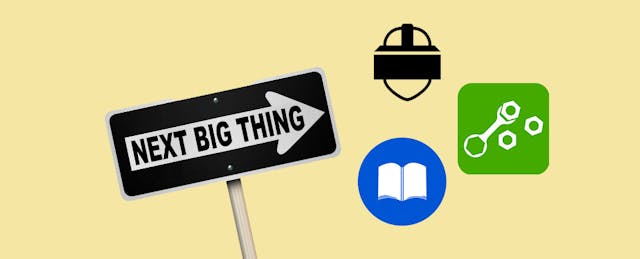Using technology in schools is no longer just about preparing our students for college and career. Not only do they need the skills to navigate and utilize technology, but they need to understand how technology can connect them with people, places, and resources that were previously unreachable.
In 2014, I wrote about strategies for edtech success in the new school year, and in 2015, I wrote about edtech teaching trends for the new school year. Well, I’ve spotted some tools and strategies that have amazing potential to empower students and teachers to engage and learn more with the world beyond their school. So this year, I’m sharing my high hopes for how some of the new powerful tools out there could be used in your school or classroom.
High Hope #1: Student-Created VR (Virtual Reality) and AR (Augmented Reality)
Where we are: The buzz around virtual and augmented reality is hard to ignore. Thanks to Google Expeditions, Within, Aurasma, and many other tools, students can explore coral reefs, go to refugee camps, and watch art come to life. If you’re looking to bring these experiences to your students, there are infographics, articles, and books loaded with ideas and tutorials. But there is a way to take these tools farther, and make them more student-centered.
My high hope: Why not show students how to create with VR and AR? One student could incorporate guided virtual reality into a presentation or lesson she shares with their classmates about a historical site. Another student could find photographs of places or inventions he wants to study and then create augmented reality-triggered videos of himself explaining what he’s learned. A couple of years ago, my high school students created their own scavenger hunt with QR codes, and loved learning from one another that way. We can expand that idea to virtual and augmented reality.
High Hope #2: Project-Based Learning That is Real-World
Where we are: Students are tackling simulated scenarios via project-based learning in classrooms across the country. They work on real-world problems, but often their final solutions are submitted only to their teacher and not to the adults who are trying to solve those real-world problems.
My high hope: Our students are capable of helping us figure out the issues we are struggling with in our own communities. The students at Algonquin Regional High School helped their local towns with tech support nights at local libraries. Fourth graders at High Tech Elementary School met with nearby organizations and launched their own websites and businesses to support the police department, water board, humane society, and more. As Dr. Katie Martin shares in her TEDx Talk, I hope more teachers and schools partner with the businesses and organizations in their communities to empower students to work in partnership with adults.
High Hope #3: Coding Can Break Out of Technology Classes
Where we are: There is tons of buzz around teaching kids to code as the means to create our future. It is good! We should expose our learners to programs like Girls Who Code or Codecademy. I’ve seen the students in my own school get pretty excited about the robots they’ve built and programmed with code. Coding has helped students get hooked on computer science in the elementary and middle levels and has helped self-motivated students build apps for their high schools.
My high hope: I’m hoping to see coding break out of those technology class molds so students can invent to learn in all of their classes. Sarah Roman’s students are doing it with Raspberry Pi in her English classes and Dan Ryder’s students are building with Little Bits in his Literature classes. Coding and programming can help students take abstract academic themes and build something to express them. I believe expert educators in history, arts, science, and many more classrooms are poised to do the same this year.
High Hope #4: Cleanly Curated Open Education Resources
Where we are: Since the U.S. Office of Education Technology launched GoOpen last year, OERs have gotten a big boost. 16 states have signed on to scale the OER model so that more students and teachers have access to them. There are a wealth of free digital materials and lessons available online for all subject areas and levels.
My high hope: In order for high quality OERs to be combined with high quality instructional design, teachers need tools that allow them to curate the resources and make them easily accessible to students. A promising new iPad app is TES Teach. (It’s also available through any browser.) I made this TES Teach lesson about student-driven learning for some teachers at my school. Not ready to dig through all OERs and curate on your own? Collections from your fellow educators from around the globe are available at Participate Learning and BloomBoard to get you started. Consider encouraging students to research, curate, and design their own lessons with OERs. What a great way for our students to demonstrate learning or even teach their classmates.
Note that all of these high hopes focus on empowering students to research, design, serve, build, and publish. If we are going to use technology in our schools with our students, it should be because that technology allows them to find information, connect with people, visit places, and create things that were never possible before.
What will edtech make possible this school year?


